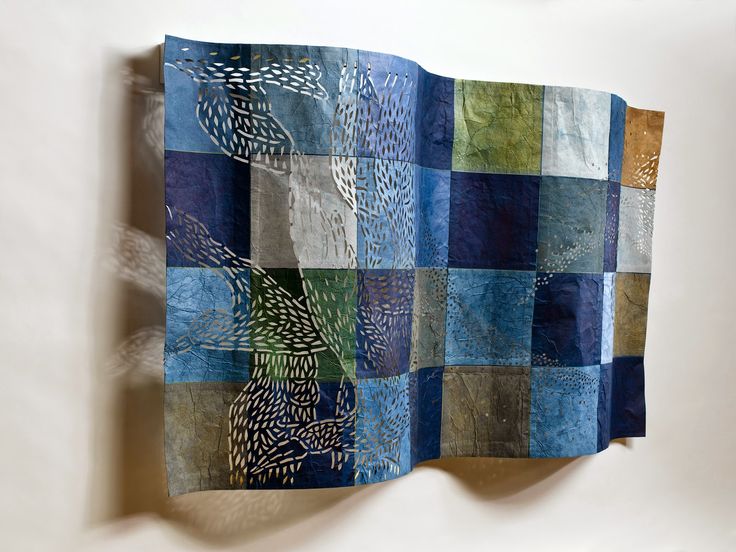
News of a workshop from Nadia Kahn:
Akemi Nakano Cohn will be in Houston during October 2017 to teach a Katazome Workshop. This workshop will focus on all of the processes for Katazome, with special emphasis on stencil design and cutting.
The Workshop:
Many popular images are portrayed through Katazome, a traditional Japanese technique – applying rice paste resist to fabric through hand-cut mulberry paper stencils (katagami). In this workshop, students will learn the basic Katazome technique.
The workshop will focus on the design and cutting of stencils through several exercises. We will cook rice paste with traditional recipes, make an indigo dye pot, and then dip our rice pasted fabrics into the indigo dye pot, creating beautiful and various shades of blue. Tsutsugaki, free-hand drawing with rice paste using a special pastry cone made from mulberry paper with Kakishibu glue will add individual design to works.
Last October, my mother, Myrna, and I took Akemi’s workshop in Vancouver at the Maiwa Textile School. She’s a wonderful teacher with a lovely sense of humor, and she shared many new ideas related to Katazome to our group. There are many aspects of this work which can be used in other forms of surface design, and I encourage you to register for the workshop. Registration is limited to 12 students, so sign up soon to reserve your spot.
Details:
Location: The Guild House near downtown Houston.
Dates: The 4-day workshop will be held Oct 6 – 9, 2017 (Friday – Monday).
Fees: The price for the workshop is $400, plus $75 for supplies (total $475).
For additional information or to register for the workshop, please contact me at NadiaKhanSilks@gmail.com.
The Artist:
Akemi studied Katazome-—a traditional rice paste resist printing technique—for ten years under Master Haru Izumi in Japan. She has an MFA in Fiber Art from Cranbrook Academy of Art. She has taught and exhibited internationally and has been an Artist-in-Residence at the SEEDS Arts and Education Program, Anderson Ranch and the Ragdale Foundation.
Always thoughtful and contemplative, Akemi has said, “When using katagami cut-out stencil paper, I remark on the empty shape left behind after cutting. This ‘negative space’ indicates the trace of its existence. Negative space is evidence of a memory. My work is an attempt to understand memory through this process and inner observation. I am interested in observing a condition of adaptation and memory among plants, animals, and humans in their environment.”
Akemi has pursued an extensive series of international exhibitions and commissions. She is a master of the Nassen technique, which adds a dye to rice paste to create both colour and resist simultaneously.
www.akemistudio.com

